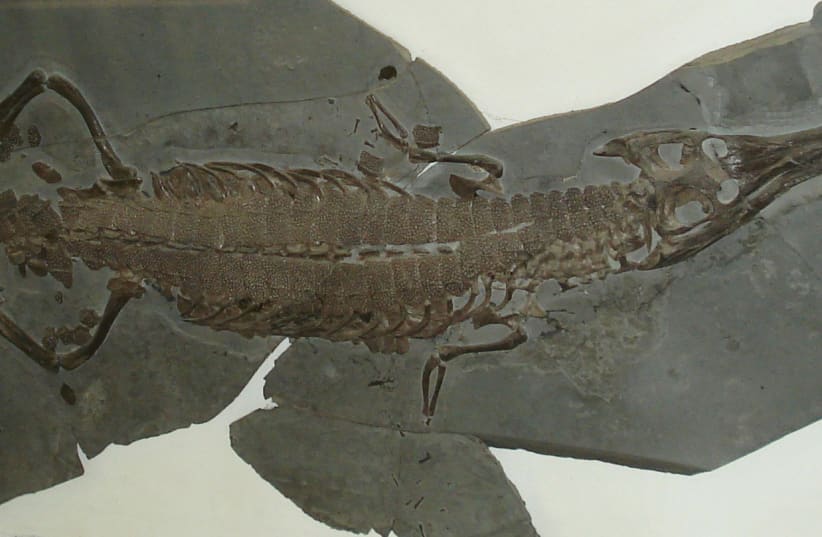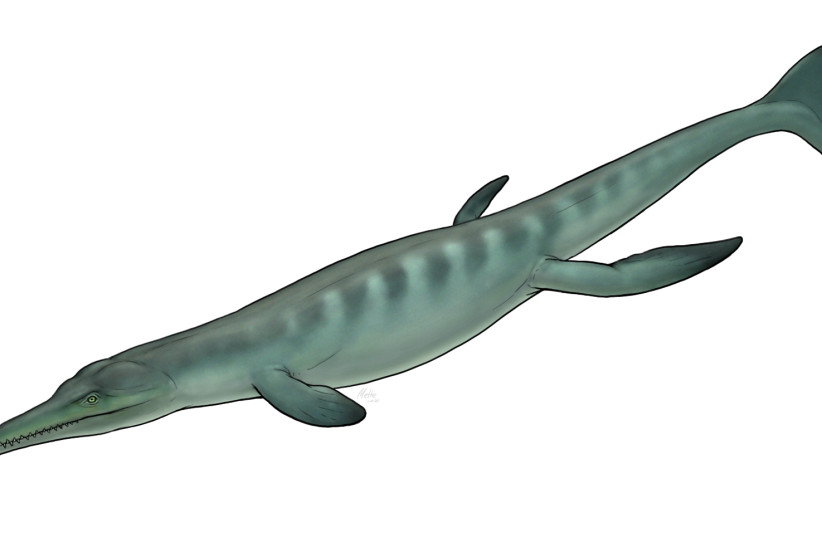Researchers in the United Kingdom identified a previously unknown "marine crocodile" from the Early Jurassic, Pliensbachian period, some 185 million years ago, according to a new study.
According to the peer-reviewed study, published in the Journal of Vertebrate Paleontology last month, the "crocodile," Turnersuchus hingleyae, is the oldest specimen of a thalattosuchia - a "sister" of crocodile's ancient ancestors - to ever have been discovered.
Experts believe that the discovery will help fill a gap in the fossil record and indicate that thalattosuchians and other crocodyliforms may have originated near the end of the Triassic period, 15 million years before Turnersuchus existed.
“We should now expect to find more thalattosuchians of the same age as Turnersuchus as well as older.”
Study co-author Dr. Eric Wilberg
“We should now expect to find more thalattosuchians of the same age as Turnersuchus as well as older,” said study co-author Dr. Eric Wilberg, an assistant professor from the Department of Anatomical Sciences at Stony Brook University.
“In fact, during the publication of our paper, another paper was published describing a thalattosuchian skull discovered in the roof of a cave in Morocco from the Hettangian/Sinemurian (the time periods preceding the Pliensbachian where Turnersuchus was found), which corroborates this idea. I expect we will continue to find more older thalattosuchians and their relatives. Our analyses suggest that thalattosuchians likely first appeared in the Triassic and survived the end-Triassic mass extinction.”
Discovery helps reduce ghost lineage
No excavations have yet uncovered thalattosuchians in rocks from the Triassic period, meaning there is a ghost lineage, or a period during which a group is known to have existed but for which fossil evidence has not been found.
Before Turnersuchus was found, the ghost lineage spanned from the end of the Triassic to the Toarcian, in the Jurassic period.
"The new specimen extends the fossil record of Thalattosuchia, but the time-scaling analyses demonstrate that a significant ghost lineage remains," the researchers noted.
Turnersuchus lived in the Jurassic Ocean where it preyed on marine wildlife and it would have resembled modern-day gharial crocodiles, which are found in major river systems on the northern Indian subcontinent.
“However, unlike crocodiles, this approximately 2-meter-long predator lived purely in coastal marine habitats,” said study co-author Dr. Pedro Godoy from the University of São Paulo, Brazil. “And though their skulls look superficially similar to modern gharials, they were constructed quite differently.”
Notably, thalattosuchians had large supratemporal fenestrae, the part of the skull that contains the jaw muscles.
The study linked this feature to Turnersuchus' resemblance to other thalattosuchian crocodyliforms such as Pelagosaurus and Plagiophthalmosuchus.
"Morphologically, Turnersuchus resembles Pelagosaurus and Plagiophthalmosuchus in many ways, helping to cement numerous features such as large supratemporal fenestrae, presence of a squamosal facet, broad exposure of the prootic on the lateral braincase wall, and the orbital process of the quadrate without bony attachment to the laterosphenoid or parietal as plesiomorphic for the group," the study noted.

